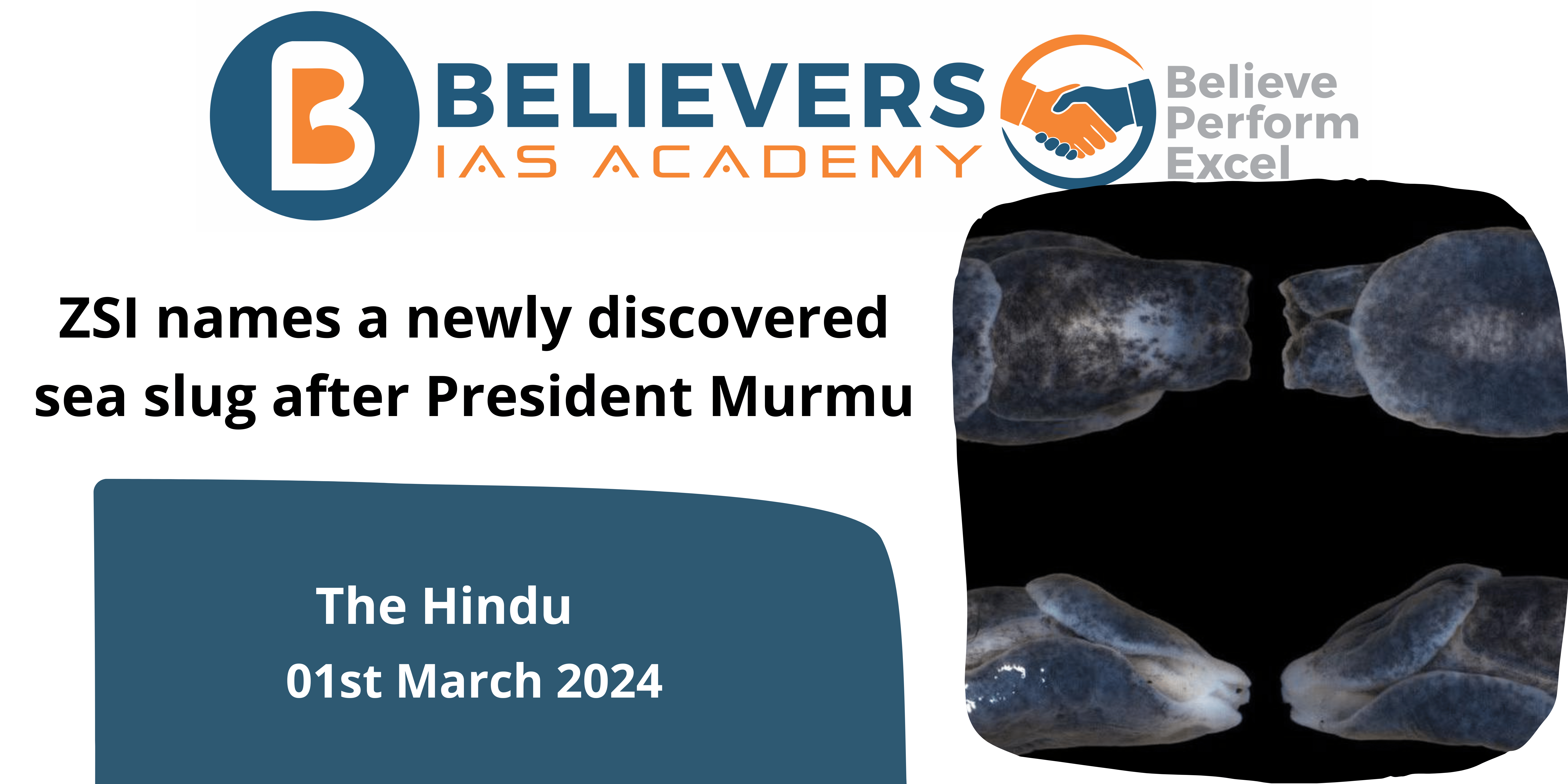ZSI names a newly discovered sea slug after President Murmu
Context:
A new marine species of head-shield sea slug, named Melanochlamys droupadi, has been discovered by the Zoological Survey of India (ZSI) along the coasts of West Bengal and Odisha.
Relevance:
GS-03 (Species)
Discovery of Melanochlamys droupadi:
- The Zoological Survey of India (ZSI) has identified and named a new marine species of head-shield sea slug, found exclusively along the coasts of West Bengal and Odisha.
- This newly discovered species, named Melanochlamys droupadi, showcases distinctive features, including a ruby red spot, which sets it apart from other sea slugs.
Morphological Characteristics:
- Melanochlamys droupadi, belonging to the Melanochlamys genus, exhibits unique morphological traits.
- It possesses a short, blunt, and cylindrical body, along with a smooth dorsal surface adorned with two shields, namely the anterior cephalic and posterior shield.
Habitat and Behavior:
- These sea slugs are small invertebrates, typically reaching a maximum length of 7 mm.
- They display a brownish-black coloration with a prominent ruby red spot located at the hind end.
- Hermaphroditic in nature, these sea slugs are commonly found crawling on intertidal zones, leaving distinctive crawl marks behind on sandy beaches.
Reproduction and Distribution:
- Observations suggest that the reproduction of Melanochlamys droupadi occurs predominantly between November and January.
- While species of the Melanochlamys genus are generally distributed in temperate regions of the Indo-Pacific Oceanic realm, Melanochlamys droupadi stands out as a tropical species, specifically found along the West Bengal and Odisha coastlines.
Unique Adaptations:
- A paper published by ZSI researchers highlights the unique adaptations of Melanochlamys droupadi. These sea slugs continuously secrete transparent mucus to form a protective sheath, preventing sand grains from entering the parapodial space.
- They exhibit a remarkable behavior of crawling beneath smooth sand, creating a moving capsule where their bodies are rarely visible.



